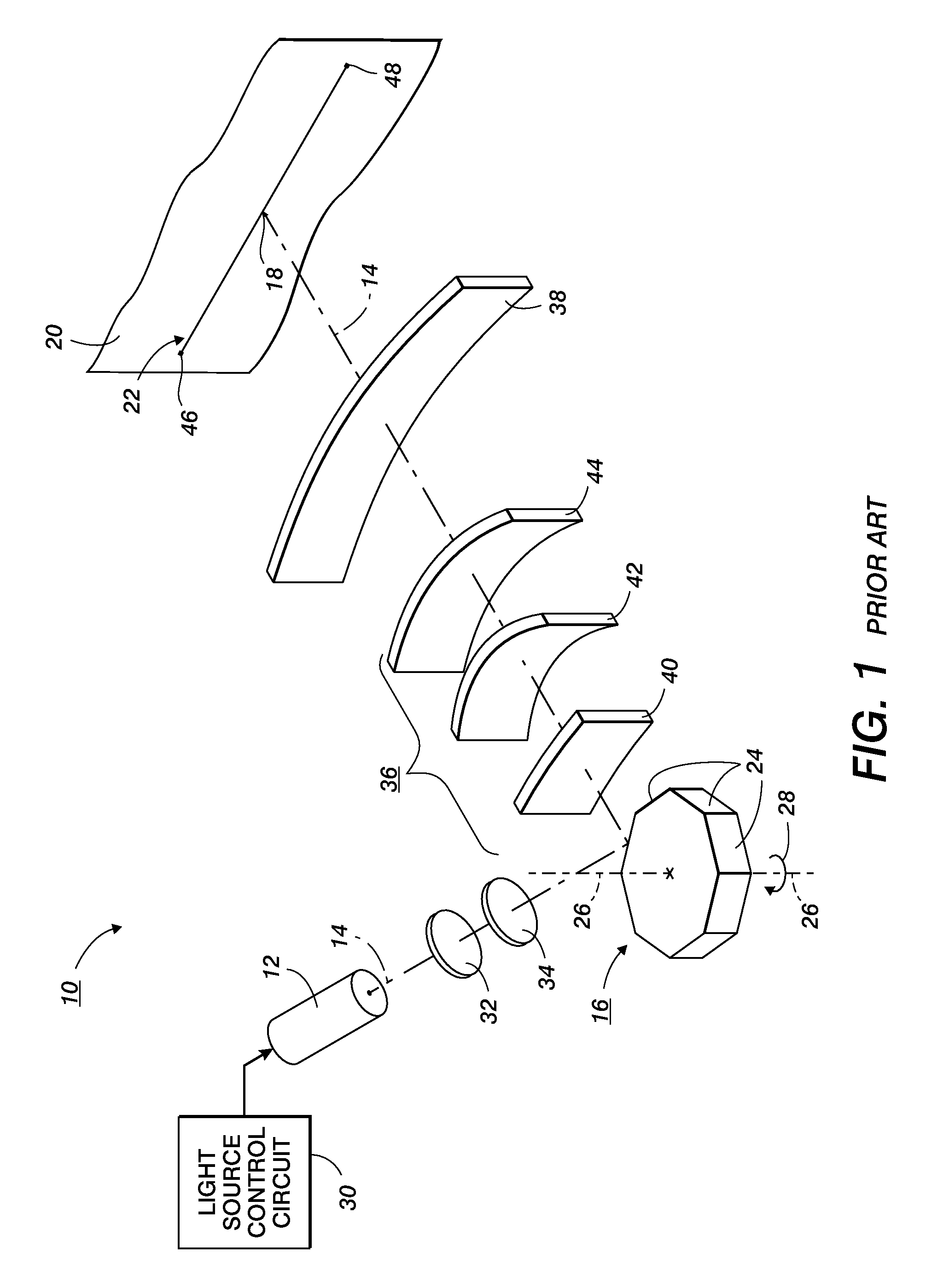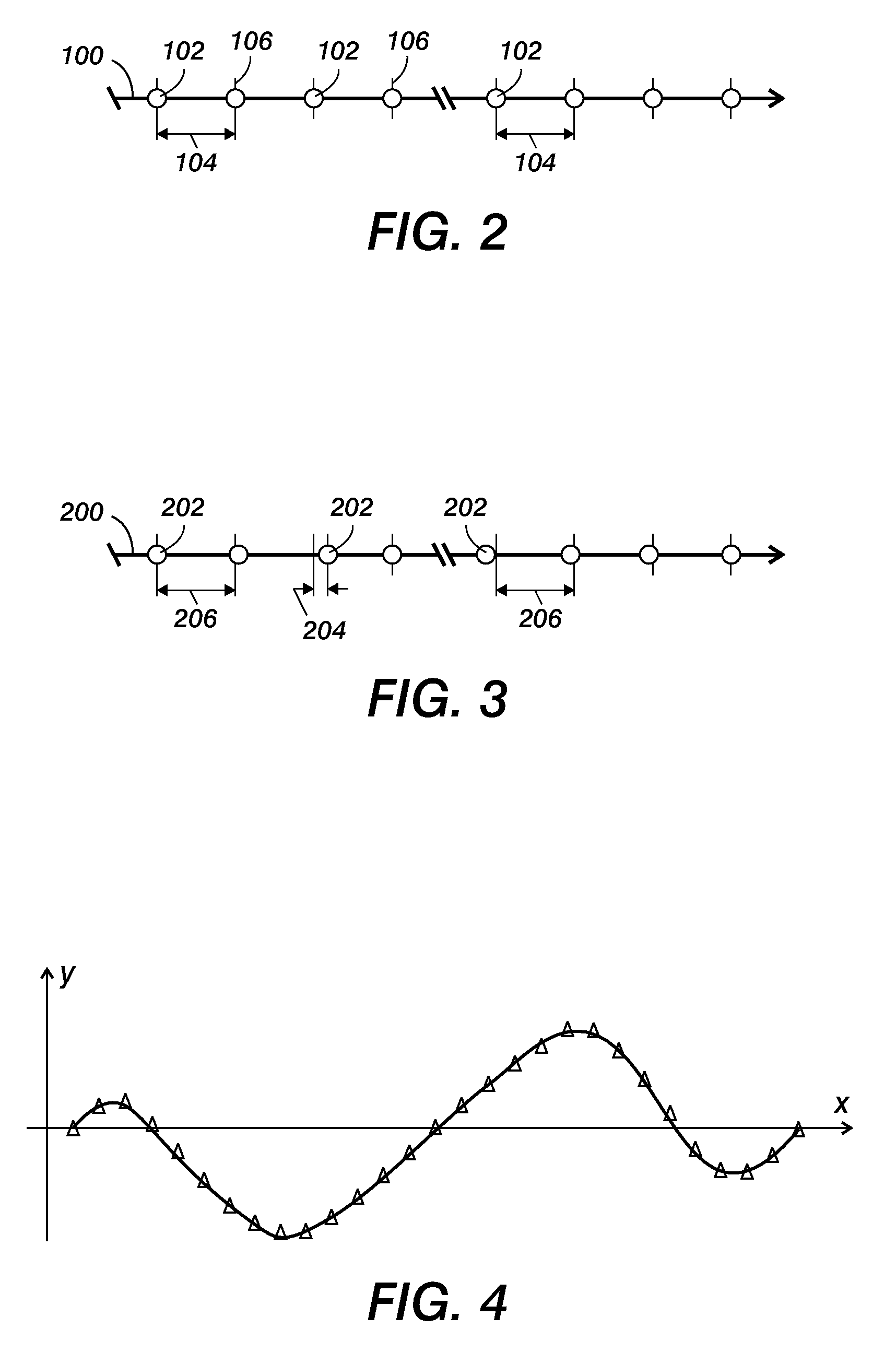Use of registration marks and a linear array sensor for in-situ raster output scanner scan line nonlinearity detection
a technology of linear array sensor and registration mark, which is applied in the direction of electrographic process apparatus, instruments, printing, etc., can solve the problems of inability to register colors in multiple ros laser printers, deviations from the uniform grid, and difficulty in obtaining evenly spaced pixels
- Summary
- Abstract
- Description
- Claims
- Application Information
AI Technical Summary
Benefits of technology
Problems solved by technology
Method used
Image
Examples
example
[0062]If registration marks are to be imaged by a ROS at the following locations from an edge of a paper (e.g., measured in inches)
ABCD. . .YZ1.01.52.02.5. . .9.510.0
[0063]The scan non-linearity error in the ROS may cause the registration marks to be imaged at the following locations from the edge of the paper (in inches)
ABCD. . .YZ1.11.452.012.61. . .9.499.95
[0064]Using the present disclosure the positions in the cross-process direction of the registration marks (e.g., A-Z) on the image bearing surface can be detected using the linear array sensor. The error between the desired positions in the cross-process direction of the registration marks (e.g., where they should have been placed) and the actual positions in the cross-process direction of the registration marks (e.g., where they are actually placed) is characterized by a correction function (e.g., a polynomial curve). The correction function is then integrated into a controller of the ROS. When imaging the pixels (e.g., regist...
PUM
 Login to View More
Login to View More Abstract
Description
Claims
Application Information
 Login to View More
Login to View More - R&D
- Intellectual Property
- Life Sciences
- Materials
- Tech Scout
- Unparalleled Data Quality
- Higher Quality Content
- 60% Fewer Hallucinations
Browse by: Latest US Patents, China's latest patents, Technical Efficacy Thesaurus, Application Domain, Technology Topic, Popular Technical Reports.
© 2025 PatSnap. All rights reserved.Legal|Privacy policy|Modern Slavery Act Transparency Statement|Sitemap|About US| Contact US: help@patsnap.com



